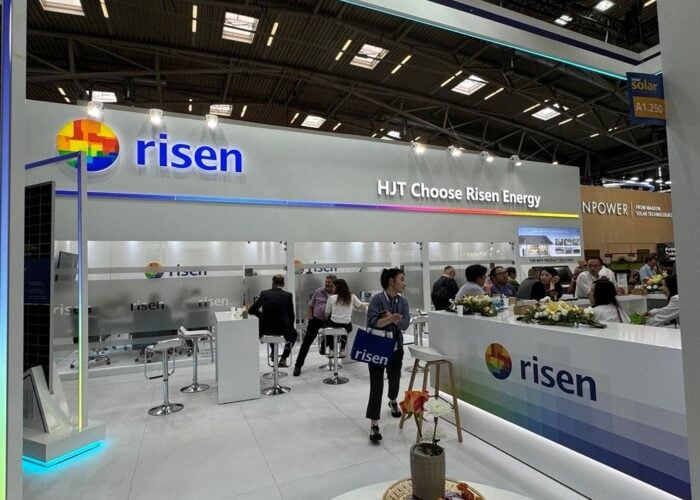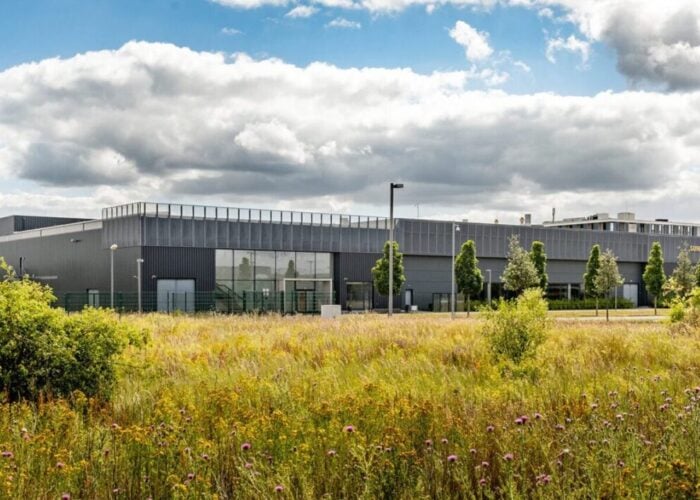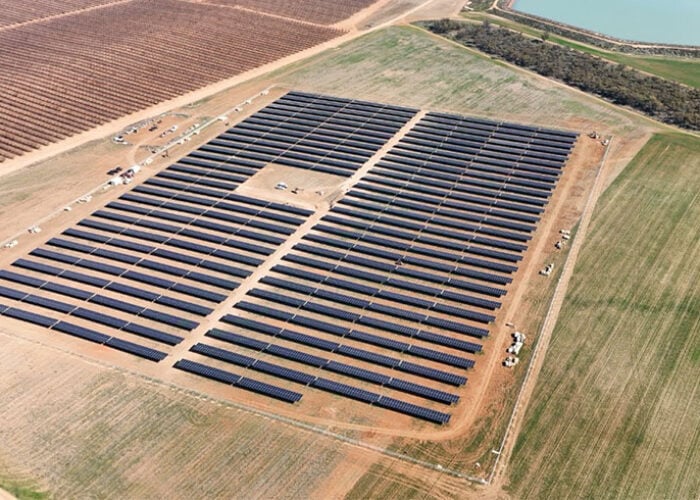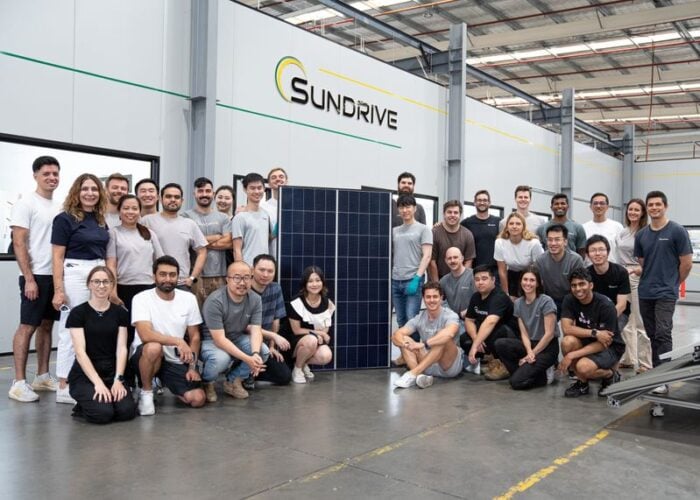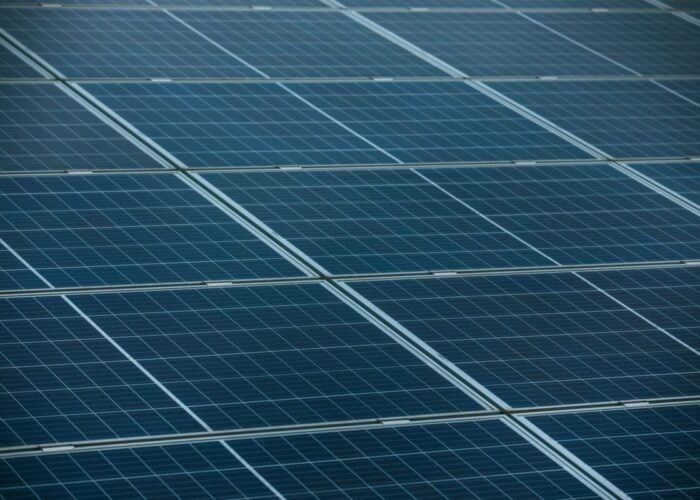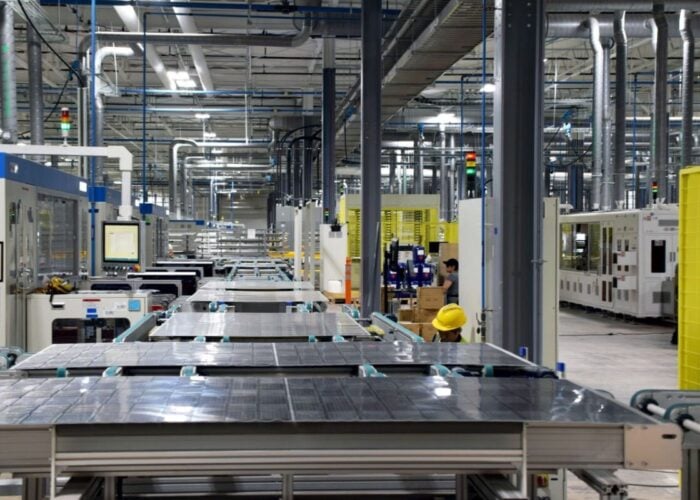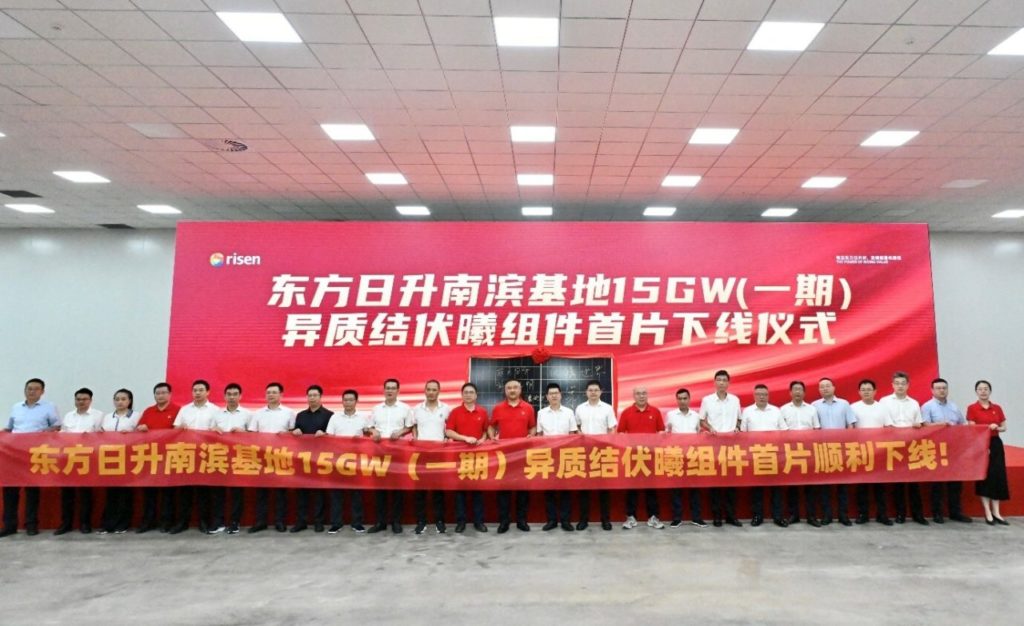
Solar Module Super League member Risen Energy has started commercial production of its Hyper-ion heterojunction technology (HJT) solar modules, which boast a conversion efficiency of 23.89%.
The company produced the first of the n-type HJT modules on Friday at its Nanbin manufacturing base in the city of Ningbo, China, at an event attended by company executives and government officials. The module’s maximum power output of 741.5Wp, and its efficiency rating, are records for the company’s HJT modules, and Risen expects the modules to be particularly durable, expecting their power output to fall to just 90% after 30 years.
Unlock unlimited access for 12 whole months of distinctive global analysis
Photovoltaics International is now included.
- Regular insight and analysis of the industry’s biggest developments
- In-depth interviews with the industry’s leading figures
- Unlimited digital access to the PV Tech Power journal catalogue
- Unlimited digital access to the Photovoltaics International journal catalogue
- Access to more than 1,000 technical papers
- Discounts on Solar Media’s portfolio of events, in-person and virtual
Risen first announced the module in February of this year, and the scale-up of production is a significant milestone for the company. It has already announced plans to increase its production capacity of the Hyper-ion modules to 15GW by the end of this year, following a US$7 billion investment into new manufacturing capacity made in January 2022.
“The official operation of the Nanbin manufacturing base not only gives Risen Energy another competitive edge but also holds pivotal importance in fuelling Ninghai’s resources for developing intelligent manufacturing,” said Wu Xuegang, president and member of the executive board of Risen.
“We will focus on ramping up the production of high-efficiency modules as we continue to strengthen the solar value chain in Nanhai to achieve greater industry synergy, helping the region establish itself as a PV and energy storage powerhouse.”
Risen’s Hyper-ion modules also use technological innovations, such as surface contact passivation, to optimise efficiency in electricity production. There has been considerable investment in new technologies in the solar sector in recent months, including LONGi’s unveiling of a solar cell with a conversion efficiency of 33.5%, but implementing meaningful change to the solar sector will rely upon implementing these innovations on a large scale.
As a result, Risen’s success production of its Hyper-ion modules, and the company’s plans to further scale up operations, could be an important proof of concept for processes such as surface contact passivation in the solar sector.

